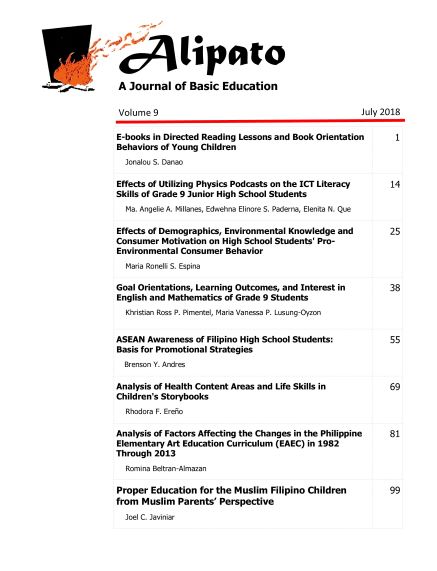Analysis of Factors Affecting the Changes in the Philippine Elementary Art Education Curriculum (EAEC) in 1982 Through 2013
Abstract
The Elementary Art Education Curriculum (EAEC) has developed from being focused on the value of aesthetics, art form, and techniques to one that is geared towards cultural and social relevance, and holistic development of children. This qualitative study utilizes desk review and key informant interviews (KII) to examine significant transformations of the EAEC from 1982 to 2013 and the factors that influenced such changes. The said period is important with the re-establishment of the democratic government, and shows how the national aims of education have been translated into the three curricula used during the period. Documenting how EAEC has evolved would serve as guide posts to future developments of the art education discipline and practice. Findings show that the changes in the EAEC have been primarily driven politically and legally by Constitutional policies and other mandates. Underlying these policies are socio-economic and cultural factors that have continuously shaped the views and appreciation of Philippine society and identity as Filipino students and citizens. Moreover, innovations in approaches and strategies, and the presentation and contextualization of content are driven by factors resulting from changing socio-cultural perspectives, educational breakthroughs in the discipline of art education, technological discoveries, and studies on the teaching-learning process in general.
Keywords: Art Education, Art Curriculum, Curriculum, Philippine Art Education Curriculum, Philippine Elementary Art Education


